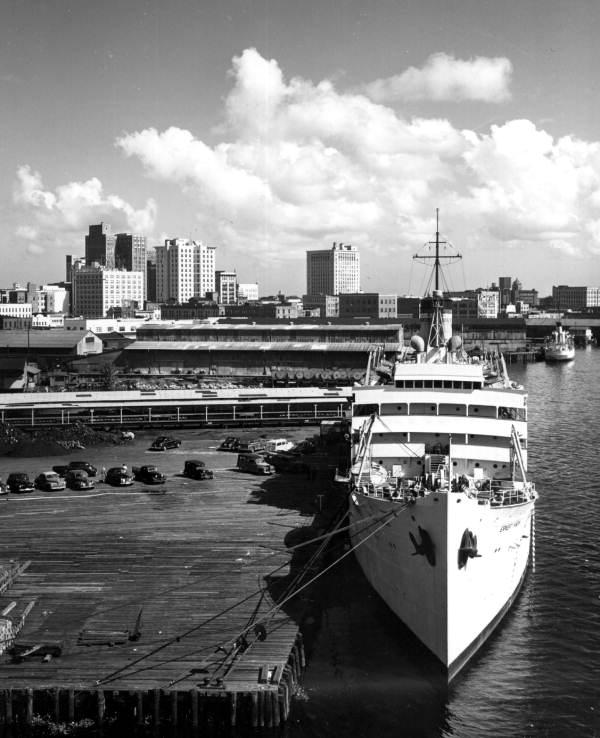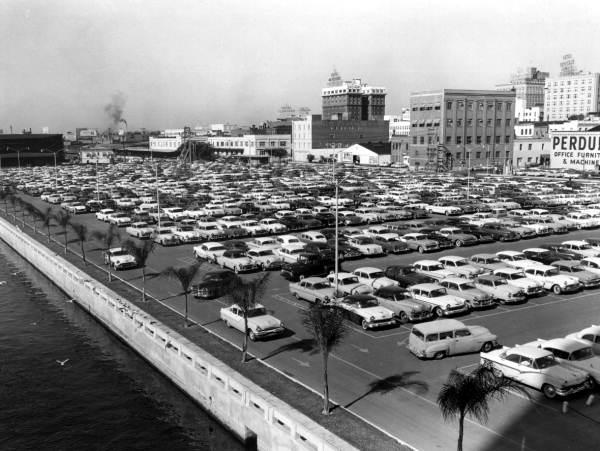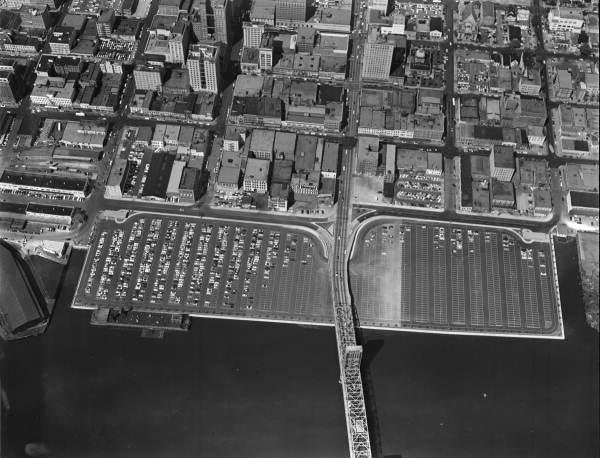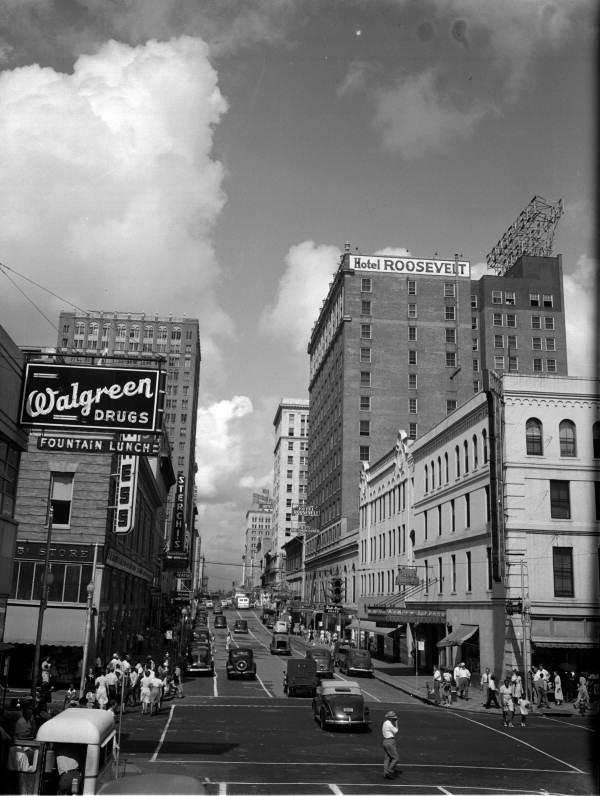The article and many that have responded in this thread fail to make the realization that Florida has a diverse amount of cities. Some Florida cities have traditional downtowns and some don't. Some have successful downtowns and others don't.
 Last day of streetcar operations in 1936
Last day of streetcar operations in 1936
In Jacksonville's case, we do have a traditional downtown that was established and built out well before post WWII suburbanization took over. However, after the Great Fire of 1901, it never had a significant residential population base. Residents lived in a fairly walkable 31 square mile collection of core neighborhoods tied to downtown via a network of +60 miles of streetcar lines.
 A downtown aerial before WWII.
A downtown aerial before WWII.
 Waterfront heading into the 1950s
Waterfront heading into the 1950s
The downtown core itself, was where the maritime industry interchanged with the railroad. The waterfront was littered with wharfs, rail terminals, and associated industries. The railroad station was the largest in the South during its heyday, basically serving as the gateway to Florida. These two industries employed thousands and attracted thousands, which led to supportive services such as hotels, retails, offices, etc.
 Waterfront by the end of the 1950s
Waterfront by the end of the 1950s

Downtown Jax's decline didn't happen because of the growth in the burbs or white flight. It happened because its two original economic anchors were relocated to other areas of town, in an effort to clean up the waterfront and transition the CBD to an insurance industry mecca in the 1950s and 1960s.
 When the railroad and maritime terminals were relocated for waterfront surface parking lots and office towers, so did the factories, markets, and warehouses (and their thousands of employees) that were served by them.
When the railroad and maritime terminals were relocated for waterfront surface parking lots and office towers, so did the factories, markets, and warehouses (and their thousands of employees) that were served by them.
 Mid 20th century brings one way streets to downtown.
Mid 20th century brings one way streets to downtown.
Well, once the steamships, freighters, rail terminals, and passenger rail station left, the hotels fell like a set of dominos in the 1970s. The nail in retail came in the mid-1980s when the city tried to turn the core into an outdoor pedestrian mall. The construction project lasted so long, it ended up forcing JCPenney, May-Cohens, Ivey's to shut down their stores within a few months of each other.

Mixed in with all of this were urban renewal projects which were promoted as economic redevelopment, but really they were to "clear up blight", or to cleanse the area of dense minority populated neighborhoods.
 Sugar Hill, which was about a mile north of downtown. An upscale African-American neighborhood completely gone today.
Sugar Hill, which was about a mile north of downtown. An upscale African-American neighborhood completely gone today.
 Every structure in this image demolished in the name of "progress"
Every structure in this image demolished in the name of "progress"
The last 20 years has seen city hall focus on expensive gimmicks, such as the Landing (a Rouse festival marketplace) to lure suburbanites and policies intended to bring in a certain style of development. At the same time, while downtown has floundered, the neighborhoods the city cared nothing about, came back and now are decent urban districts. In short, downtown Jacksonville's struggles have been the City of Jacksonville itself and the restrictive policies implemented that have limited individual innovation and creativity from taking place within a compact urban setting. For example, we call ourselves the river city, there's miles of riverwalk downtown but its against the law to fish from the riverfront (just in downtown).
This stuff really isn't rocket science. The answer for Jacksonville is simply to modify bad public policy, reestablish reliable transit connectivity with other urban core neighborhoods and then get the hell out of the way of the private sector.
Btw, all the images are from the State Archives of Florida collection.



